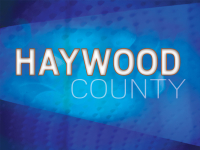Card dealers line up for on-the-spot job offers at Harrah’s Cherokee casino
 Hundreds of people stood in line, some for more than an hour, outside Harrah’s Cherokee Casino and Hotel last Wednesday waiting to enter and try their luck — at getting a job.
Hundreds of people stood in line, some for more than an hour, outside Harrah’s Cherokee Casino and Hotel last Wednesday waiting to enter and try their luck — at getting a job.
Festival celebrates native people from around the world
 Visitors to Cherokee can witness the powerful, authentic culture of Comanche, Totonac, Seminole, Cree, Polynesian and Cherokee July 13-14 as indigenous tribes gather for the eighth annual Festival of Native Peoples at the Cherokee Indian Fair Grounds in Cherokee.
Visitors to Cherokee can witness the powerful, authentic culture of Comanche, Totonac, Seminole, Cree, Polynesian and Cherokee July 13-14 as indigenous tribes gather for the eighth annual Festival of Native Peoples at the Cherokee Indian Fair Grounds in Cherokee.
New outdoor drama debuts at Cherokee’s Mountainside Theater
 For the first time in its 62-year history, the Mountainside Theater in Cherokee has added a new play to its repertoire.
For the first time in its 62-year history, the Mountainside Theater in Cherokee has added a new play to its repertoire.
Dynamite rotunda comes to life at Harrah’s Cherokee casino
 Harrah’s Cherokee Casino and Hotel never had an entrance that made visitors stop and say wow — until now.
Harrah’s Cherokee Casino and Hotel never had an entrance that made visitors stop and say wow — until now.
Franklin lacked proper license to douse mound with weed killer
Franklin could face a state penalty for spraying weed killer on an ancient Cherokee mound site because the town workers who did it weren’t properly licensed to use the herbicide.
The state could fine the town as much as $2,000, according to Pat Jones, pesticide deputy with the N.C. Department of Agriculture and Consumer Services. Or, the state could simply issue a warning and not fine the town. Jones said the case is still under review. He was uncertain when a decision would be made.
Mayor censured for acting alone in apology to tribe
The Franklin Board of Aldermen censured Mayor Joe Collins this week for making a personal apology to the Eastern Band of Cherokee Indians after the town sprayed Nikwasi Indian Mound with weed killer.
Lawsuit blames Cherokee for investment losses in children’s trust fund
The Eastern Band of Cherokee Indians has denied any wrongdoing in a lawsuit related to investment losses in a trust fund that safeguards casino earnings on behalf of Cherokee youth.
The tribe has, among other things, asked a judge to deny a class-action status in the lawsuit, which would allow any youth affected by the losses to be compensated by the tribe.
Recession rebound: turnaround in progress at Harrah’s Cherokee Casino
After inching its way back from recession-driven declines during the past year, Harrah’s Cherokee Casino and Hotel is back in the catbird seat.
You could even call it a Royal Flush. The advent of live dealers and table games coincides with a $633-million transformation of the casino into a rollicking resort.
Signs as art
 Jeff Marley is creating signs for Cherokee and the surrounding area proclaiming in Cherokee and in English, “We are still here.”
Jeff Marley is creating signs for Cherokee and the surrounding area proclaiming in Cherokee and in English, “We are still here.”
Drum, song and dance highlight Powwow
 With strong personal, familial and spiritual traditions and a healthy dose of competition, the 37th annual Cherokee Powwow will ignite a three-day festival of drum, song and dance to kick off the summer season in Cherokee.
With strong personal, familial and spiritual traditions and a healthy dose of competition, the 37th annual Cherokee Powwow will ignite a three-day festival of drum, song and dance to kick off the summer season in Cherokee.
Hundreds of powwow dancers, including several world champions, will compete at the Acquoni Expo Center June 29-July 1.









